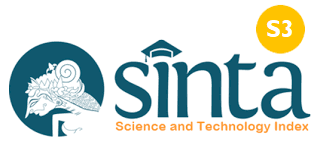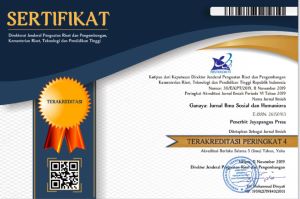Implementasi Sistem Pengendalian Internal Revitalisasi Pasar Desa Mertapada
DOI:
https://doi.org/10.37329/ganaya.v5i4.2771Keywords:
Internal Control, Market Revitalization, Analysis SWOTAbstract
The Internal Control System is a system designed to achieve organizational goals effectively and efficiently, the reliability of presenting financial reports, and compliance with government regulations. This research aims to obtain an overview of the internal control system in the revitalization of the Mertapada Kulon village market, to find out the obstacles faced in the internal control system for the revitalization of the Mertapada Kulon village market, and to find out the appropriate strategy in the internal control system for the revitalization of the Mertapada Kulon village market in Cirebon Regency. This study uses a qualitative method. The research strategy in the qualitative approach that the author uses is a case study strategy. The research was carried out at the Mertapada Kulon Village Market, which is located on Jalan Wahid Hasyim, Mertapada Kulon, Astana Japura District, Cirebon Regency. Interview collection techniques, observations, and interviews Data analysis includes data reduction, data presentation, and drawing conclusions. The results of the research show that overall, the internal control system in the revitalization of the Mertapada Kulon village market is in accordance with its implementation. Obstacles in the form of internal factors are the limited government budget, the fact that there are several traders who want to revitalize the market with only one floor, and the lack of firmness on the part of the revitalization committee in arranging the layout. kiosk on the first floor. The external factors that hindered this were natural factors (rainy weather), there were several community parties who did not approve of the revitalization program, and the processing of permit documents from the relevant agencies took up to 4 months. By using SWOT analysis, the diversification strategy is able to optimize the internal control system for revitalizing the Mertapada Kulon village market by maximizing strengths and opportunities while simultaneously minimizing the weaknesses and threats faced.
References
Abubakar, I., Abaukaka, T. onimisi, & Momoh, M. K. O. (2020). Implications of Free Trade Area For Poverty, Household Welfare And Economic Development In Nigeria. International Journal of Social Sciences and Economic Review, 1–11.
Al-hashimi, F. W. S. (2016). The Hidden Face of Erbil Change and Persistence in the Urban Core. June, 395.
Ammad, S., Alaloul, W. S., Saad, S., & Qureshi, A. H. (2021). Personal protective equipment (PPE) usage in construction projects: A scientometric approach. Journal of Building Engineering, 35, 102086.
Aurini, J. D., Heath, M., & Howells, S. (2021). The how to of qualitative research. Sage.
Brennen, B. S. (2021). Qualitative research methods for media studies. routledge.
Brouwer, I. D., van Liere, M. J., de Brauw, A., Dominguez-Salas, P., Herforth, A., Kennedy, G., Lachat, C., Omosa, E. B., Talsma, E. F., Vandevijvere, S., Fanzo, J., & Ruel, M. (2021). Reverse thinking: taking a healthy diet perspective towards food systems transformations. Food Security, 13(6), 1497–1523.
Christ, M. H., Eulerich, M., Krane, R., & Wood, D. A. (2021). New frontiers for internal audit research. Accounting Perspectives, 20(4), 449–475.
Deka, M. (2023). Traders and Tinkers: Bazaars in the Global Economy. Stanford University Press.
El Junusi, R. (2020). Digital marketing during the pandemic period; A study of islamic perspective. Journal of Digital Marketing and Halal Industry, 2(1), 15–28.
Fred, D. (2011). David, Fred, R. In Strategic Management Manajemen Strategi Konsep,. Edisi 12. Jakarta: Salemba Empat.
Hennink, M., Hutter, I., & Bailey, A. (2020). Qualitative research methods. Sage
Kyngäs, H. (2020). Qualitative research and content analysis. The Application of Content Analysis in Nursing Science Research, 3–1
Liamputtong, P. (2023). How to Conduct Qualitative Research in Social Science. Edward Elgar Publishing
Lois, P., Drogalas, G., Karagiorgos, A., & Tsikalakis, K. (2020). Internal audits in the digital era: opportunities risks and challenges. EuroMed Journal of Business.
Reimers, V., & Chao, F. (2014). The role of convenience in a recreational shopping trip. European Journal of Marketing, 48(11–12), 2213–2236.
Rinaldi, R. (2016). Implementasi Peraturan Daerah Kabupaten Cierbon Nomor 7 Tahun 2014 Tentang Penataan, Pembinaan Pasar Tradisional. Pusat Perbelanjaan dan Toko Modern. Correspondencias & Análisis, 15018, 1–23.
Silverman, R. M., & Patterson, K. L. (2021). Qualitative research methods for community development. Routledge
Sehnem, S., Lopes de Sousa Jabbour, A. B., Conceição, D. A. da, Weber, D., & Julkovski, D. J. (2021). The role of ecological modernization principles in advancing circular economy practices: lessons from the brewery sector. Benchmarking: An International Journal, 28(9), 2786–2807
Walsh, F. (2020). Loss and Resilience in the Time of COVID-19: Meaning Making, Hope, and Transcendence. Family Process, 59(3), 898–911.
Yulianti, N. M. D. R., & Kintani, A. C. S. (2020). Revitalization: new opportunities or new problems? The perspective of trader. International Journal of Business, Economics & Management, 3(1), 177–185.
Downloads
Published
How to Cite
Issue
Section
License
Copyright (c) 2022 Ipik Permana, Mukarto Siswoyo, Ifa Elmu Ma’rifat (Author)

This work is licensed under a Creative Commons Attribution-ShareAlike 4.0 International License.
An author who publishes in the Ganaya : Jurnal Ilmu Sosial dan Humaniora agrees to the following terms:
- Author retains the copyright and grants the journal the right of first publication of the work simultaneously licensed under the Creative Commons Attribution-ShareAlike 4.0 License that allows others to share the work with an acknowledgement of the work's authorship and initial publication in this journal
- Author is able to enter into separate, additional contractual arrangements for the non-exclusive distribution of the journal's published version of the work (e.g., post it to an institutional repository or publish it in a book) with the acknowledgement of its initial publication in this journal.
- Author is permitted and encouraged to post his/her work online (e.g., in institutional repositories or on their website) prior to and during the submission process, as it can lead to productive exchanges, as well as earlier and greater citation of the published work (See The Effect of Open Access).
Read more about the Creative Commons Attribution-ShareAlike 4.0 Licence here: https://creativecommons.org/licenses/by-sa/4.0/.








